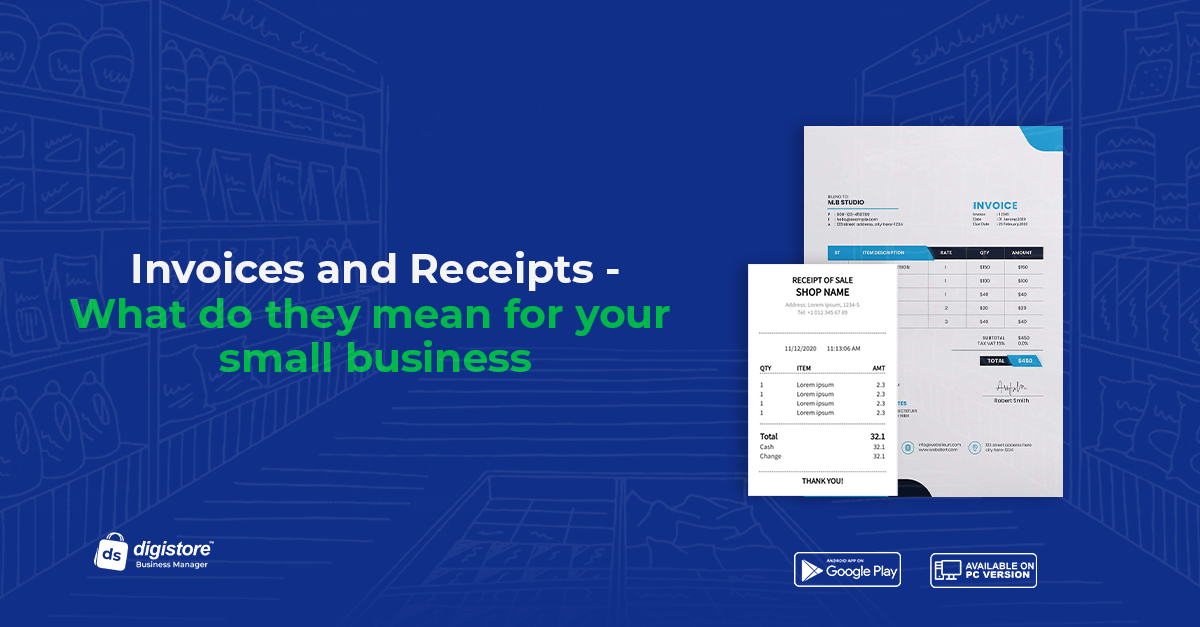
Invoices and Receipts – Demystifying Their Importance for Your Small Business
Are you among the many small business owners who occasionally find themselves puzzled by the distinction between invoices and receipts? If so, you’re certainly not alone! These two documents are fundamental to business transactions, but they serve distinct purposes and come into play at different stages of the buying process. Let’s clarify the confusion surrounding invoices and receipts, ensuring you’re well-equipped to navigate these essential elements of your business operations.
Simply put, the Invoice is a request for payment – Let’s say a customer reaches out to you with a shopping list, including some customized items, and requests delivery. You also decide to extend a special discount because they’re a valued customer. When it’s time to seal the deal, you send them an invoice. An invoice is a document issued by your business to a customer, requesting payment for products or services rendered. It serves as a formal record of the transaction and typically includes crucial information such as:
Your business details, customer details, Invoice number and date, description of products/services, payment terms and total amount due.
Invoices convey professionalism and establish trust with your customers. They provide a clear, structured, and legally binding record of the transaction. They help you track your sales, monitor outstanding payments, and prepare your business for tax purposes. With invoices, you can easily track which customers have paid and which are overdue, making it easier to manage your cash flow.
Receipts, on the other hand, are documents provided to customers as proof of payment. They typically include: business details, customer details, receipt number and date, description of products/services, and payment details. Providing receipts assures your customers that their payment has been received and recorded accurately, enhancing their satisfaction and trust in your business. It also serves as proof of payment, protecting both you and your customers in case of disputes or warranty claims. And when it comes to keeping track, receipts are vital for reconciling your financial records, ensuring that all transactions are accurately accounted for.
When to Send an Invoice vs. Receipt
Before your client makes a payment, you must issue an invoice. The invoice is often sent after you have completed your commitments if you are delivering goods or rendering services without being paid first. With this strategy, you can be confident that your consumer is well aware of both the cost of their purchase and their need to pay you.
On the other hand, after the payment has been received successfully, a receipt should be sent. Your consumer will feel secure knowing that their payment has been received and properly handled thanks to this quick action. Businesses that demand upfront payments before providing services or delivering goods typically prefer receipts. They also assist in keeping accurate financial records.
To summarize, an invoice is your formal request for payment, sent before your customer makes the payment, whereas a receipt serves as proof that the payment has been completed, given to your customer after they’ve made the payment. Both documents are indispensable for smooth transactions and the maintenance of accurate financial records.
With this clarified understanding, you can confidently manage your business transactions like a seasoned professional. The next time you send out an invoice or provide a receipt, rest assured that you have a firm grasp on these essential elements of your business operation. Happy selling!
Bonus Tip: Simplify your invoicing and receipt processes with Digistore Business Manager. This powerful tool offers customizable templates for both invoices and receipts, making your small business operations even more efficient. Download it today to elevate your financial management game.



